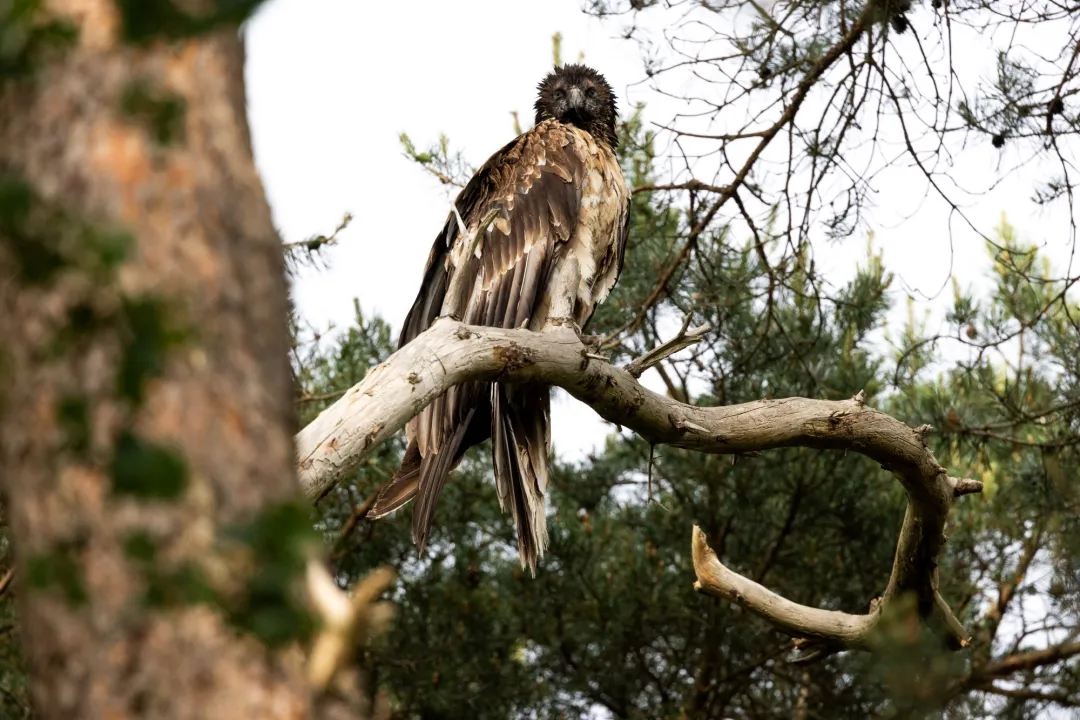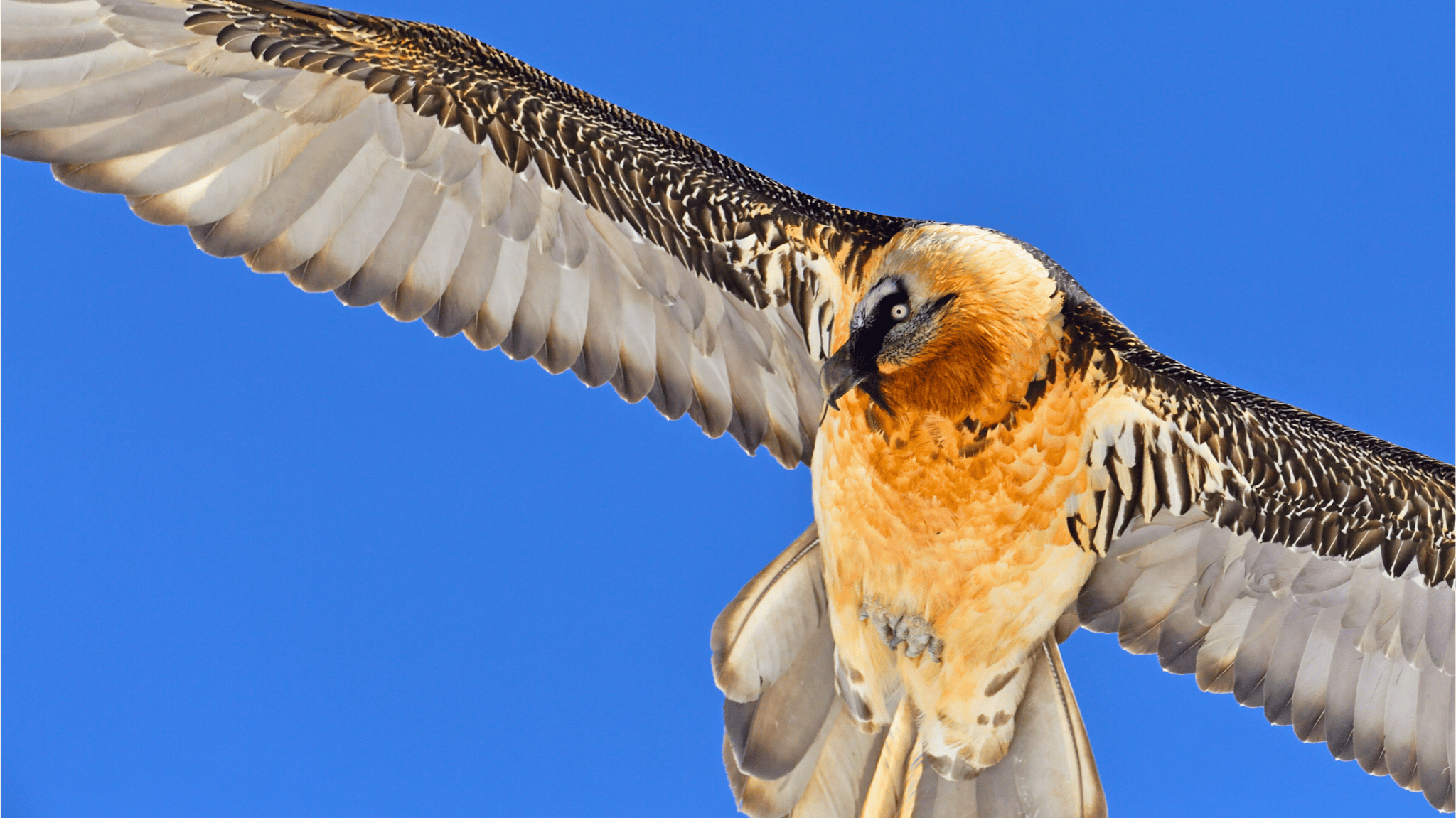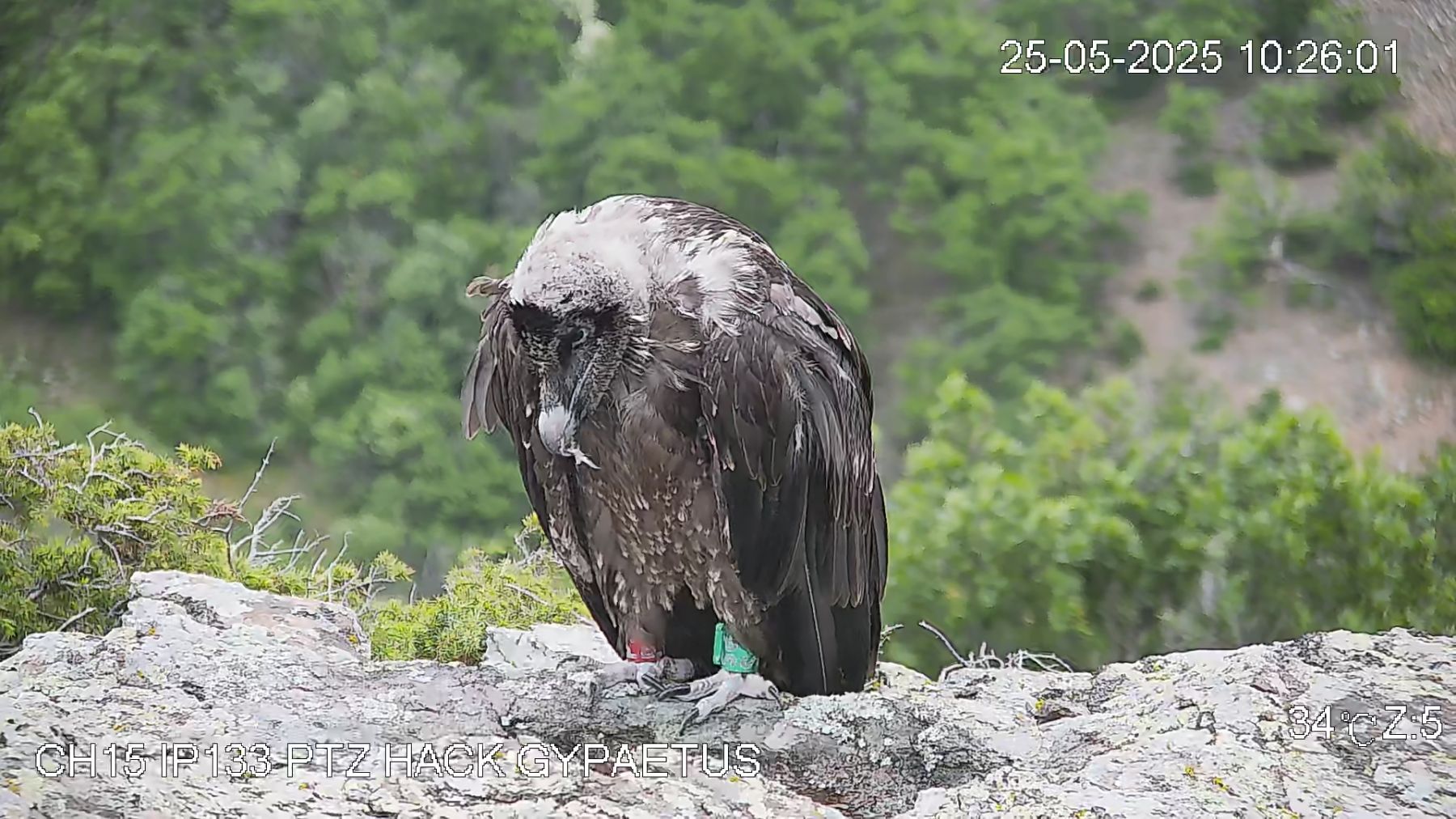Last month a team from the Corsica Regional Park (Parc Naturel Régional de Corse) succeeded, for the second year in a row, in marking a wild-hatched juvenile bearded vulture with a satellite tag. The operation involved a well-coordinated and professional team of climbers, surveillance staff and technicians, as conditions were difficult – the small, well-protected nesting cavity in Popolasca was difficult to access. But with the experience from the previous year, the whole action took less than an hour, and was very successful – the first locations were transmitted by the GSP/GPS device two days later.
In the meantime the juvenile fledged successfully and is far beyond the nest. It has spent the last few weeks in a deep valley close to the nest, often perching in a large cavity without any direct sunlight. As soon as the bird starts to fly at higher altitudes and in regions with a better GSM coverage, the transmitter should send the locations of the bird in regular intervals.
The transmitter of Libeccia, the first juvenile bearded vulture satellite-tagged in Corsica (in 2013, in Bonifato), has transmitted more than 2’000 validated GPS locations during the first year. The data shows that the juvenile bird roamed so far mainly in the northern part of the island, within the range of the remaining bearded vulture pairs. However, it did a few excursions to the south (see interactive map on here>).
The Corsican bearded vulture population is one of the few remaining autochthonous populations in Europe. In the last 15 years the population decreased dramatically from ten to five reproductive units and had a very low productivity (only 9 young fledged in the last 10 years). The VCF closely cooperates with the Parc Naturel Régional de Corse, and has recently agreed to contribute in an emergency action plan, to be implemented over the next few years, to secure the conservation of this very valuable population.




